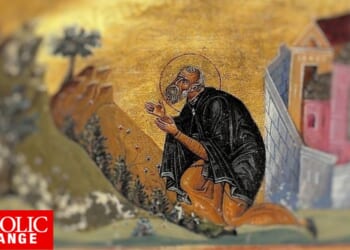The rural–urban divide has been a persistent and compelling theme throughout human history, but in our day the class of person once thought of as the land-tilling peasant has almost completely died out in the West—except, perhaps, as a lazy pejorative. Before 1950, however, about three-quarters of the world’s population resided in the countryside, and that portion was larger still in much of Eastern Europe. These people were not the great political actors or intellectuals who have often filled the pages of history, but Jakub S. Beneš’s new book The Last Peasant War traces the role that Central and Eastern European peasants played in the grand and oftentimes violent changes that defined the first half of the twentieth century.
Even before World War I, the peasants’ star had fallen—a star that hung very low to begin with. In much of Central and Eastern Europe, the remnants of feudal systems kept enormous amounts of land in the hands of a very small group of nobility and gentry. A blow to the village economy came with industrialization, when cheap manufactured goods killed the cottage industry in rural communities. This caused smallholding farmers to be entirely financially dependent on their agricultural production. Peasants, who had always been at the mercy of the seasons, were at the turn of the twentieth century even more precariously placed. World War I greatly exacerbated the situation and put peasants in an untenable position.
Beneš begins his narrative with the crisis caused by the war. He focuses on the Austro-Hungarian Empire, with occasional reference to the other belligerents. The Habsburg monarchy was opposed by bigger and better-prepared armies; their solution to this military disadvantage was to recruit large numbers of troops from the farms and villages that made up the majority of the empire. These rural soldiers risked their lives on the battlefield, and the labor-intensive nature of family farms meant that the removal of working-age men from villages, especially in important seasons, could lead to collapse and starvation. Increasingly, rural soldiers deserted the army and returned to their villages.
The Austro-Hungarian Empire also faced material shortages and addressed them by instituting a series of price controls on agricultural products and forcing the seizure of metals—including from church bells and farming equipment. This interference in village life greatly angered the peasants, leading to silent forms of resistance in many villages, such as the concealing of items from the gendarmes and the threshing of grain or churning of butter by night. More violent forms of protest emerged when armed deserters formed bands in the woods around their villages to avoid prosecution and resist these increasingly stringent demands. These bands were informally known as “Green Cadres,” and they were an influential feature of the landscape for decades. Some of these groups were Robin Hood–like heroes who stopped requisitions and gave money to the peasants, others were well-organized military units that helped republican governments form and protected new nation-states, and a few were anarchic bandits who attacked anyone they thought had wronged them.
Beneš writes of the subversive power of peasant anger in Austria-Hungary:
Backed by millions of villagers, scores of thousands of Green Cadres helped bring down the ancient empire from within. Farther east, the peasant green armies that emerged in the Russian Civil War across immense territories from western Ukraine to the Urals posed perhaps the most serious threat to the fledgling Bolshevik regime before their final subjugation in 1921. In both places, the appearance of green peasant forces marked the culmination of rural resistance to the states waging the Great War.
Later, after the incredible hardship of the Great Depression era, peasants found themselves the fulcrum in the deadly seesaw of the World War II’s Eastern Front. They were caught between Hitler and Stalin and faced the same problems as they had in World War I, but on a much larger scale: mass military mobilization across their land, conscription, command economies, requisitions. Nazi Germany’s Generalplan Ost and Stalin’s collectivization brutalized the landscape. Once again, peasant resistance took several forms. The political component was carried out internationally by exiled agrarian politicians, but, on the ground, peasants formed themselves into paramilitary groups, some made up of the same deserters and “Green Cadres” who had been active since World War I.
The Last Peasant War covers a nearly fifty-year time period and half of the European landmass, but it is woven together in a comprehensible narrative by several key themes. Perhaps the most important one is the disregard for rural life by the ruling class, whether they be monarchs or republicans. Most villagers and rural politicians—and Beneš makes very clear that there were agrarian political movements and that peasant resistance was far more than banditry—were broadly supportive of a republican form of government, but new, urban-centered democracies offered little to answer the needs of those outside the city walls.
Beneš writes excellent history. His research is thorough and exact, and he weaves those findings together into a well-planned and consistently focused book. Another word of praise for Beneš is that he unfolds his story without a strong political bias. The twentieth century has been described as a contest of ideology, and its historians are prone to giving their favor to one of its combatants. But Beneš’s only bias is towards the peasants about whom he is writing, a group that, as he points out, was not a part of anyone’s vision of the future. Liberal and Marxist intellectuals were of the city, and they saw the future of modernity in the factories and not in the fields.
















